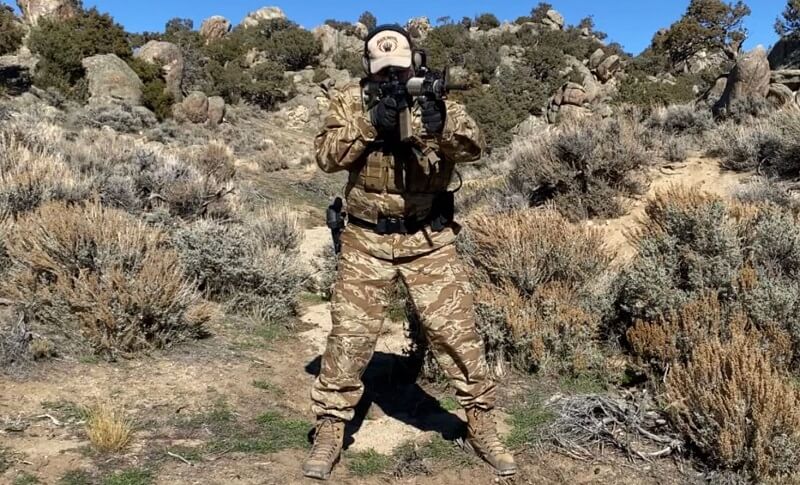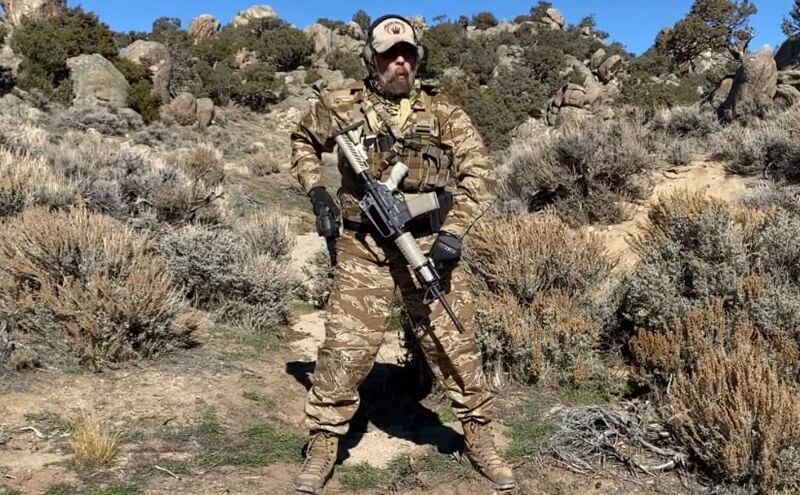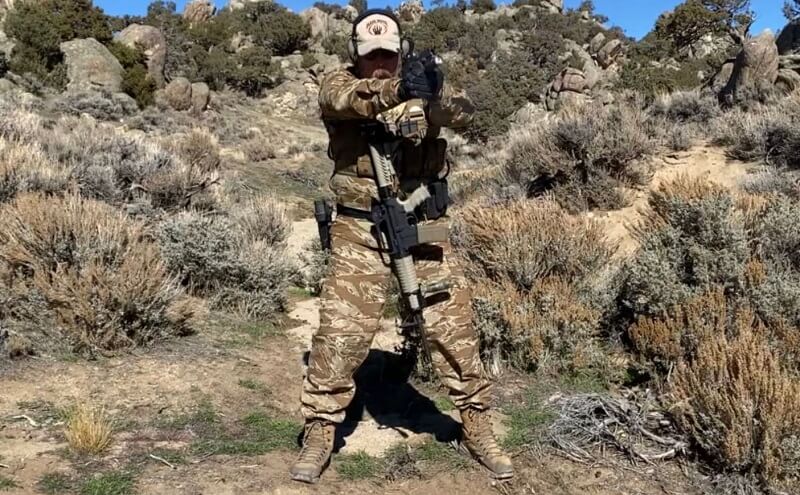Navigate This Post
Original Publish Date: 11/29/2021 | Updated: 01/05/2024
“Why do you carry two guns if you are only going to use one?” our instructor asked the class as a whole. I was attending a tactical rifle training course and all of the students were carrying some form of self-loading rifle and wearing handguns.
The question was actually rhetorical, as our teacher was about to launch into the transition portion of the training. That is, we would learn to transition from our primary gun, the rifle, to our secondary gun, a pistol. That training course was many years ago. Okay, it was more than fifteen year ago.
When I heard that question; why do you carry two guns if you are only going to use one, the idea of transitioning from a rifle to a pistol was a relatively new concept in the modern military community. A few years later, I would find myself in the role of the instructor. I would have to put that same question to my students.

The Change: One Gun to Two
Help us combat Censorship by joining our Newsletter
During my formative years in the Marine Corps Infantry, the idea that a man would carry both a rifle and a pistol was unheard of. Back then, only Tier 1 operators did such things. In a line company, you carried either a rifle or a SAW, unless you were a “gunner” and then you carried a machine-gun or rocket-launcher and a pistol. Men who carry rifles do not receive pistols. For the most part, traditional Marine Corps Line Companies still operate this way.
All of that began to change with the stupidly named Global War on Terror. While I cannot speak for every unit of every service branch, I can say that as a Small Arms and Tactics Instructor working for the DoD, we adopted and taught that tactic.
For three years, I worked full time with a cadre of instructors teaching combat troops how to employ the M4A1 carbine along with the M9 Beretta pistol. During those years we ran thousands of students through our 4-week training course. We were able to conduct, what was essentially, a combat skills laboratory, at least as far as small arms were concerned. Our students ranged from fresh out of basic training to those who had been in the service for ten years or longer. We trained both officers and enlisted personnel.
As you might imagine, I have some strong ideas about what it takes to teach fighting men how to employ a rifle and pistol. More than just the physical aspect, we must also address the mental aspect of the training.

How to Transition from a Rifle to a Pistol
The physical or mechanical skills required are really not all that difficult. If a person has been properly trained to handle a rifle/carbine and also to draw a handgun from a holster, putting the two together is not overly demanding.
STEP ONE: Begin with the tactical rifle held in both hands. Fire or attempt to fire on target.
STEP TWO: When the rifle stops making noise or fails to make noise, rounds on target are still required, and the target is within handgun range (50m or less), the support hand guides the rifle to the body as the dominant hand reaches for the handgun.
STEP THREE: When the handgun has been drawn from the holster, the support hand comes in under the dominant hand, the two mate. The handgun is then presented and fired.
STEP FOUR: When the fight is won, the handgun receives a fresh magazines and then returned to the holster. It is during this time that the shooter will examine the rifle in order to determine the reason for the lack of noise.
That’s not so hard, is it? No, what I just explained in four simple steps is not hard, that is until people decide to make it hard.

Why Should You Transition from a Rifle to a Pistol?
It is not the how that generally gets people’s panties all twisted up. It’s the why. Even though it was explained at the outset; your rifle is supposed to be making noise and it is not, people will muddy the waters.
There are many reasons why a rifle might not make noise when the shooter wants it to. The most common reason is that the shooter failed to chamber a round. We also have stoppages. A stoppage is any unintentional interruption in the cycle of operation of a firearm.
A malfunction is a type of mechanical failure in the firing system, this includes the magazine. Broken bolts, firing pins, extractors, ejectors, bad or fouled magazines all fit in that category. If any of the aforementioned are the case, nothing you do to the rifle with empty hands is going to bring it back to life.
The why in why we should transition, does not change based upon the reason the rifle stopped making noise. We must assume that our plan was to use our rifle to shoot bad people who want to make us dead. If we are shooting at such bad people and our rifle stops, the bad people are not going to give us a “time out”. We need to keep putting rounds in the direction of bad people until they stop trying to kill us.
If, given the aforementioned situation, our rifle stops making noise, the fastest, most efficient way to keep bullets flowing in the direction of bad people is to transition to our handgun. “But, I had cover nearby. I’ll take cover and fix my rifle.” Okay, what is happening with the previously discussed bad people while you fix your rifle? Most likely, maneuver during the lull and kill you.
Training and Practice
The most difficult part about transitioning from a rifle to a pistol is not the physical aspect, it is the mental component. If you hope to be able to transition rapidly in the event that your rifle stops making noise during a fight, you need to undertake training with a solid instructor. Then you need to practice it on your own.
For practice you can down-load magazines to a few rounds or you can sneak dummy rounds into our practice magazines and surprise yourself when the gun goes click instead of boom. If transitioning is a skill you truly desire, you have got to put in the time.
Lastly, if you are one of the people who wants to tell me how fast you can reload your rifle or how good you are at clearing stoppages, I have one question for you. If you are only going to use one gun, why are you carrying two?
Professor Paul Markel
Latest posts by Professor Paul Markel (see all)
- Tactical Rifle Tips: Transition Drills - January 5th, 2024
- 40/20/25 Shooting Drill - October 29th, 2023
- Working With Your Body Armor - October 3rd, 2023
- Hi-Point YC9: Yeet Cannon - August 14th, 2023
- Texas Hog Hunting: Day or Night w/ One Rifle - July 25th, 2023
Recent Comments